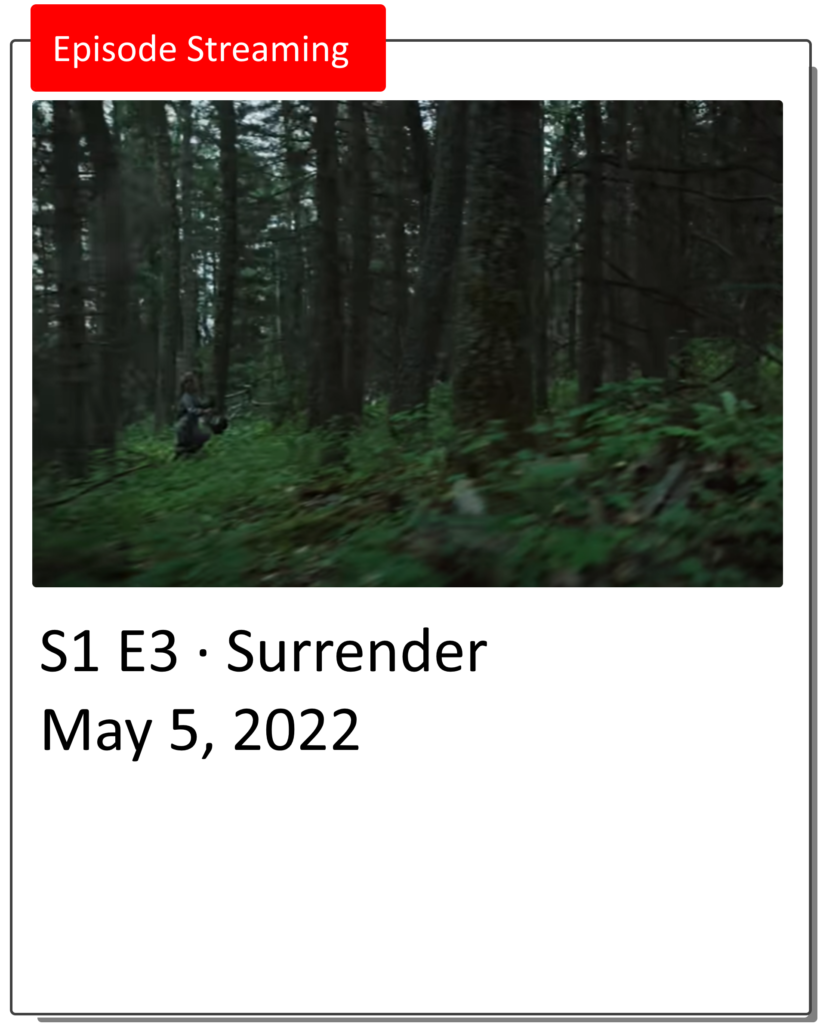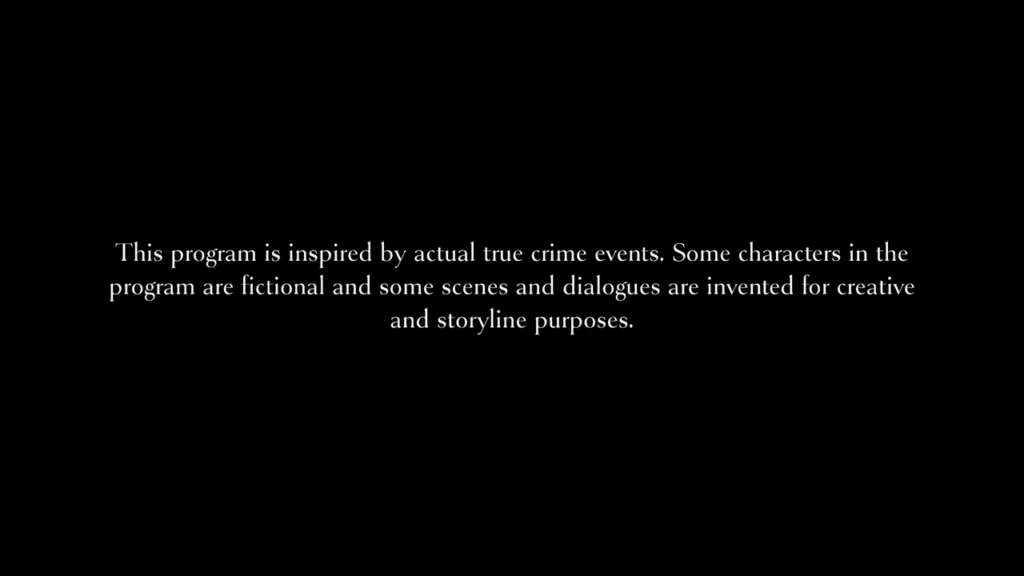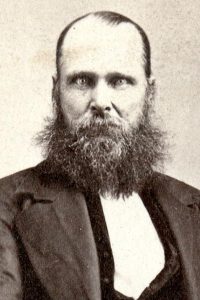This list does not represent the only errors in this episode. There are simply too many inaccuracies, misrepresentations and outright fabrications to address them all. Viewers would do well to keep the series' disclaimer in mind: this series is inspired by an actual crime, but characters, scenes and dialog are invented "for creative and storyline purposes."
Under the Banner of Heaven: Season 1 Episode 13 · “Surrender”
Episode Synopsis: The ongoing investigation leads Pyre and Taba into the woods where they unearth information that challenges Pyre’s own faith.
Question: The character of Sarah Lafferty and her daughters are dressed in clothing reminiscent of 19th century pioneers. Did the Laffertys actually dress in such clothing? And do all Mormon fundamentalists wear such clothing?
NOT TRUE. There is no evidence that the Laffertys – or any Lafferty family members – dressed in pioneer garb. Portraying them dressed that way reinforces inaccurate and negative stereotypes. Most Mormon fundamentalists don’t wear pioneer-style clothing or anything close to it. In fact, the only Mormon fundamentalists that come close to pioneer-style clothing are members of the Fundamentalist Church of Jesus Christ of Latter-Day Saints (FLDS). FLDS women wear what is called a ‘prairie dress,’ but in reality, its style is all its own, rather than resembling pioneer clothing. Other fundamentalists who wear long dresses do so for modesty: their dresses more closely resemble something that might have been worn in the 1940s or 1950s rather than pioneer clothing of the 1800s. Most fundamentalists, however, wear modest clothing that blends in with the styles of the day. The key for these women and men is modesty. There is some information about what Mormon fundamentalists wear. For example, Shannon E. Spafford, “The changing and unchanging nature of fundamentalist Mormon clothing styles,” in Newell G. Bringhurst & Craig L. Foster, eds., The Persistence of Polygamy : Fundamentalist Mormon polygamy from 1890 to the present (Independence, Missouri: John Whitmer Books, 2015).
When Jeb Pyre asks his bishop about potentially difficult and uncomfortable teachings and events in the past, the bishop says, “Brother Pyre, I’m not an academic or a historian, so I never concern myself with such deep dives. You understand what I’m saying?” Pyre says no. The bishop has a serious look on his face and says, “I don’t go digging in the past. And neither should you. You place your trust in today’s prophet, Spencer W. Kimball, you leave the things you do not understand on a shelf. Then you trust that the prophet will never lead us astray.”
Question: Are members of The Church of Jesus Christ of Latter-day Saints discouraged from researching the church’s past?
MISLEADING. Generally, members of the church are not discouraged to study church history and doctrine. They are encouraged to do so carefully and prayerfully, taking into account the nature of the material being studied. While some local leaders may discourage people from researching church history and doctrine, most do not. Members (including leaders) are free to do as they believe correct. The “shelf” paradigm was mentioned in a church magazine in 1975, but it wasn’t about sticking things on the shelf instead of asking questions. It was about patiently waiting for answers that are more difficult to find.
Question: Is it typical for an LDS husband to be angry at his wife for speaking up and giving her opinion on family, church, and community issues?
NOT TRUE. No, most LDS husbands would have no problem with their wives speaking up and expressing their opinions on whatever issues in which they have an interest. In fact, they would have a problem with their wives feeling they could not give opinions. To suggest otherwise is not only inaccurate but offensive.
Allen talks about how Joseph Smith turned toward aggression “that gave birth to our very first destroying angel.” Allen continues, “Isn’t that how the Missouri governor got filled up with lead?”
Question: Was Lilburn Boggs shot and killed by a Mormon “destroying angel” while serving as governor?
NOT TRUE. Lilburn Boggs was no longer governor when an unknown assailant shot him in 1842. Boggs served as governor between 1836-1840. While Boggs was seriously wounded in that attack, he was not killed and did recover. Furthermore, there is no evidence that early Latter-day Saint Porter Rockwell (known by some as the “Destroying Angel”) was the one who shot Boggs.

- “Blood atonement”
- The Endowment: The ordinance versus the ritual used to present the ordinance
- Question: Are Latter-day Saint (“Mormon”) women taught to be “gratefully subservient to Mormon males” and that women must “not aspire…to independent thought”?
- Question: Are Latter-day Saint (“Mormon”) women
placed under covenant in temples to subordinate themselves to their husbands?
Being a Wife – Ensign article from 1984 by Ann. S. Reese about being a wife in the LDS church
- Hawn’s Mill Massacre
- Hawn’s Mill
- Ask Us: Top Five Reference Questions about Orrin Porter Rockwell
- Marriage
- Marriage
- Equal Partnership in Marriage
- Church History Resources
- The Importance of Asking Questions
- Fourth Floor, Last Door – “God ‘rewards those who earnestly seek him,’ so we need to keep knocking.”

How did LDS women in the 1980s view being a wife? Being a Wife – Ensign article from 1984 by Ann. S. Reese about being a wife in the LDS church
Here are some resources to help you become acquainted with the actual event:



